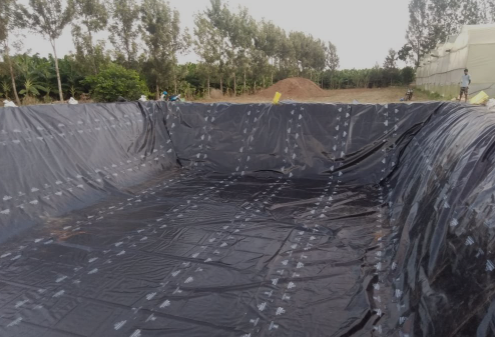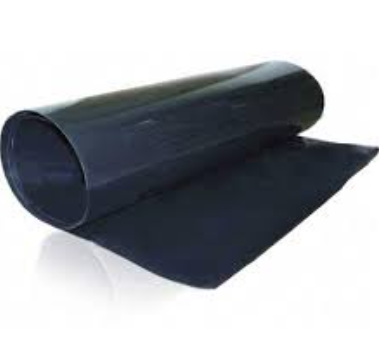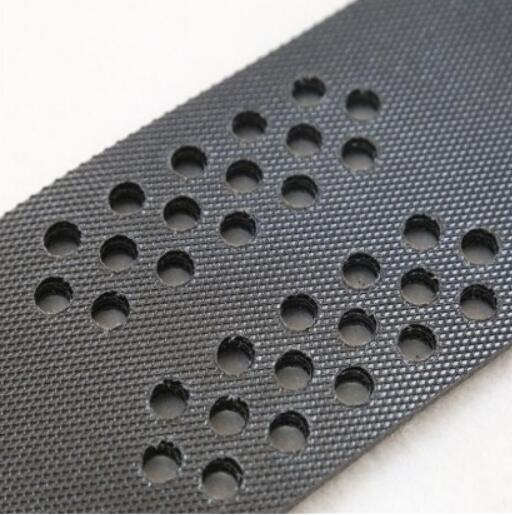- The Selection Criteria for High-Quality Geomembrane Liners
- The Installation Process of Geomembrane Liners
- The Environmental Impact of Geomembrane Liners
- Geomembrane Liners: A Barrier Against Soil Contamination
- The Advantages of Geomembrane Liners Over Traditional Lining Methods
Manager:Alvin Wang
WhatsApp:+62 8983806051
Tel:+86 10-5797-1075
Email:steelwang@okorder.com
Address:3rd Floor, No.2 Building, No.1 Sanlihe Road
How long does it take HDPE geomembrane to degrade?
hdpe Geomembranes have a reputation for being tough, impervious and resistant to environmental conditions. However, like any other material, HDPE geomembranes are prone to degradation with time. Understanding the process of degradation and factors affecting it is essential in determining how long they can be used before they eventually become useless especially in their applications. In this article we discuss the mechanisms of HDPE geomembrane degradation, factors that influence degradation rates and strategies for extending service life.

Degradation Mechanisms of HDPE Geomembrane
The various mechanisms by which HDPE geomembranes can degrade are:
Chemical Degradation:
Chemical degradation occurs when acids, bases, solvents or hydrocarbons interact with HDPE geomembrane. Chemical exposure results in breaking down polymer chains through scissioning, oxidation, crosslinking or hydrolysis thus weakening its structure and compromising integrity. The severity of chemical degradation depends on the type and concentration of chemicals, exposure duration temperature, as well as thickness of geomembranes.
UV Degradation:
UV radiation leads to UV degradation in which case polymers are broken down into smaller units through chain scissioning, oxidation and embrittlements when exposed to high intensity sunlight rays. This is more pronounced among exposed installed above ground; where they are open air installations or those containing UV stabilizers compared others.
Thermal Degradation:
When put under such thermal conditions during installation or while in use increased temperatures accelerates polymer chain mobility leading to either disintegration through scissioning or oxidation termed as thermal degradation. Ambient temperature solar radiation heat retention and thickness of the membrane also determine Thermal Degradation takes place.
Mechanical Degradation:
Mechanical damage occurs when tensile loads compressive forces points cuts or abrasion affect these materials. Mechanical stresses result into deformation or breakage of the polymer chain, thereby significantly compromising geomembranes’ structural integrity and mechanical properties. Mechanical degradation is influenced by factors such as installation techniques, site conditions, loading conditions, and membrane thickness.
Factors Affecting Degradation Rates
The following factors affect the rates of degradation in HDPE geomembranes:
Environmental Conditions:
Geomembrane degradation is significantly affected by environmental factors such as temperature, humidity, UV radiation, chemical exposure and biological activity. Geomembranes that are installed in extreme temperatures harsh environments with high UV exposure or aggressive chemical may deteriorate faster than those installed in a mild climate or a controlled environment.
Geomembrane Properties:
Resistance to degradation depends on the chemical composition, molecular structure, additives, and manufacturing process of HDPE geomembranes. Chemical resistance UV resistance to thermal breakdown tend to be higher in geomembranes which have greater cross-linked density crystallinity average molecular weight etc. Use of materials like antioxidants carbon black or ultraviolet stabilizers can make these units last long.
Installation Quality:
The quality of installation of geomembrane including surface preparation welding technique seam integrity protection measures etc determines rate of disintegration. Poorly done installations such as inadequate surface cleaning poor seam welding inadequate cover soil increase susceptibility to rapid degradations leading to premature failures.
Exposure Duration:
This implies that the longer a HDPE geomembrane is exposed to these factors the higher its rate of decomposition will be. Some membranes are subjected to long periods under sunlight chemicals especially during construction period hence they experience accelerated aging compared to those that remain indoors most time. By watching over duration when geosynthetics are exposed it has therefore been possible for some solutions regarding degradation risks prevention cases under this category become available.
Prolonging HDPE Geomembrane Service Life
Though HDPE geomembranes are designed to perform over the long term and are durable, preventive action can help to extend their service life:
Material Selection:
To suit particular applications and environmental conditions, opt for HDPE geomembranes that possess suitable thicknesses, additives and properties. To select the right geomembrane materials consider factors such as chemical compatibility, UV resistance, thermal stability and mechanical properties.
Quality Assurance:
Ensure proper installation of geomembrane by following manufacturer guidelines, industry standards as well as best practices. Perform quality assurance inspections that involve seam testing and leak detection surveys to ensure sealing integrity of a geomebrane. Deal with any installation issues promptly so as to forestall deterioration and guarantee long-term performance.
Maintenance and Monitoring:
Geoengineering maintenance systems along with monitoring programs work in evaluating the condition of the membrane on regular basis as this may help in detecting early signs towards degradation or averting any potential risks related to it. Conduct visual inspections at periodic intervals for leakage tests and performance evaluations to identify and mitigate degradation risks.
Environmental Protection:
There is need for protecting HDPE geomebranes from environmental hazards like UV radiations, chemical spills, abrasive materials as well as mechanical damages. This may be done through adoption of preventive measures that take into account cover soil, geomebrane liners, chemical barriers among others which will help protect the geomebranes from degrading factors.

Conclusion
In conclusion the degradation of HDPE geomembranes is a complex process influenced by various factors including environmental conditions; geomembrane properties; quality of installation; duration of exposure etc. Though HDPE geomembranes are designed to perform over the long term and are durable preventive actions could be taken up to reduce its rate of degradation hence prolonging its service life. The understanding on how those processes occur together with factors contributing towards it along with ways that can be used in delaying damage period or rather extending its lifetime makes sure engineers/ project developers are able to attain effective, reliable and sustainable geomembrane containment systems.
- Previous:What is the difference between geotextile and geomembrane?
- Next:Does HDPE geomembrane degrade in sunlight?






